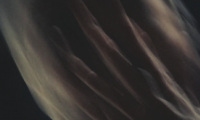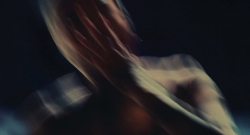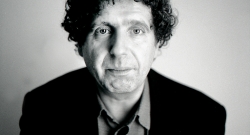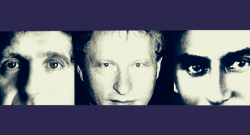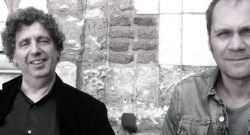Commissioned by Opéra de Lille and theMinister of Culture and Communication of France
FRENCH LIBRETTO
Je, tu, il by Valère Novarina (Prologue à la Métamorphose, commissioned by the Opéra de Lille)
Libretto after Die Verwandlung, Franz Kafka, 1915 : Emmanuel Moses, Michael Levinas and Benoît Meudic
PREMIERE
Stage director : Stanislas Nordey
Premiered by Ictus | Conductor : Georges-Elie Octors
Opéra de Lille, march 2011
CAST
Conductor : Georges-Elie Octors
Gregor (countertenor): Fabrice Di Falco
The Sister (soprano) : Magali Léger
The Father (baritone) : André Heyboer
The Mother (contralto) : Anne Mason
The Employer (bass) : Simon Bailey
The three Tenants (tenor, baritone, basse) : Simon Bailey, Laurent Laberdesque, Arnaud Guillou
The Maid (mezzo) : Julie Pasturaud
ICTUS
Michael Schmid, flute
Bruce Richards, horn
Philippe Ranallo, trumpet
Alain Pire, trombone
Jean-Luc Fafchamps, Jean-Luc Plouvier, keyboards
Tom Pauwels, electric guitar
Gerrit Nulens, Miquel Bernat, percussion
Annie Lavoisier, harp
George van Dam, violin
Aurélie Entringer, viola
François Deppe, cello
Géry Cambier, Elise Christiaens, double bass
Set Designer : Emmanuel Clolus
Costume Designer : Raoul Fernandez
Lighting Designer: Stéphanie Daniel
Repetitor : Christophe Manien
IRCAM computer music designer : Benoît Meudic / Michaël Levinas (research residency at IRCAM)
Coproduction : Opéra de Lille / Ircam-Centre Pompidou
NOTE OF INTENTION
Michaël Levinas
Kafka’s novella “The Metamorphosis” imposed itself on me as a veritable theatrical myth that gave inspiration to a sung language and a world of opera.
In my previous operas, on Gogol’s “The Overcoat” and Jean Genet’s “Les Nègres”, the question asked was always about the identity of the subject (who is the “I”? Who is the “Other”?), the textual and musical narrative, the “theatrical time”.
Working with the writing of Genet forced me to adopt a more rigorous method in order to address the semiotic structures of musical language in relation to the French language, all this in a very complex and multifaceted relationship between sound and meaning.
Since writing “Les Nègres”, I developed this research in my teaching at the Conservatoire National Supérieur de Musique of Paris, primarily around the European repertoire of the end of the 19th century and the 20th century. This notably involves meetings between Mallarme, Verlaine and the French and Viennese composers of the 20th century.
This study (text-song-theatre-opera) led me to imagine an opera based on Kafka’s “The Metamorphosis”, this time proposing a collaboration with two living writers, Valere Novarina and Emmanuel Moses.
With Valere Novarina I encountered not only a great playwright but also the creator of a language of variation, of mutation, of metamorphosis, and also a transcendent poet.
Emmanuel Moses is a poet and creator as well, of course, but he is also a great translator of the German language, as well as the heir of a school of philosophical thought (Emmanuel Moses is the son of the philosopher Stephane Moses, specialist in Rosenzweig, Scholem, Kafka and Levinas) that is very dear to me and that ties me to the poetic and spiritual themes in Kafka’s world.
In preparation for this collaboration on the stage, in 2007 I wrote madrigals on texts by Novarina and Geraschim Luca.
The structure of this new opera, “The Metamorphosis”, will be organized around a prologue on an original text by Novarina, followed by “The Metamorphosis” on a text adapted and recreated by Emmanuel Moses from Kafka’s novella.
Duration of the opera: between 1h45 and 2 hours
M.L.
LETTRE FROM MICHAËL LEVINAS TO VALERE NOVARINA
Dear Valere,
Below are a few arguments that situate more precisely for me the theatrical dimension of “The Metamorphosis” and the ambition towards the opera.
This text works on two levels of time:
-
What I call the time “from one day to the next” (when Gregor Samsa awoke one morning from a night of fitful sleep, he found himself in his bed transformed into a giant cockroach…)
-
The “smooth” time. This, of course, is the slow and almost unnoticeable metamorphosis of Gregor.
-
This metamorphosis is also one of a vital space that breaks brutally from daily professional life (visit from the authorities) then evolves imperceptibly towards a confined cell with two dimensions: the room where Gregor deteriorates and the corridors of the background where the family lives.
The narrative of this Metamorphosis is practically polyphonic: the smooth time of the metamorphosis and of the progressive confinement and the events (the sister bursting into Gregor’s room; violent scenes with the father and the tenants).
These two narrative times are superimposed.
- There is therefore a metamorphosis of the body and a metamorphosis of the space and of the two confined cells. This is why I imagine a stage set with 3 telescopic spaces that fit within one another like a Russian doll:
The closed cell of Gregor, the closed cell of the family and in the far background “the street and the daily normality of ‘everyone’, the free air.”
This chronological and polyphonic work of Kafka on the space and the narrative is essential for the composition and history of the opera.
The narrative and chronological text is rigorously linked to the musical form itself. These questions of “transition” from one moment to another, from one scene to another, the metamorphosis from one scene into another, from one word into another, from one meaning into another are neuralgic, in cinema, in theatre, in opera.
Dialogues, the question of the identity of the subject
-
Does the subject, the “I”, remain within the human body that turns into a cockroach?
-
This raises the question of the indentity of the subject, of the theatrical dialogue, the internal dialogue,
(what La Fleche in Moliere calls “I am talking to my hat”)
Who hears whom? At what moment in the decomposition of the body does the dialogue break off? This is a question of hearing and mis-hearing.
Dissolution of the inter-human connection and of the myth of the family
This tension in the text leads to the tragic awareness of the dissolution of the inter-human and family connect. Kafka’s intuition also tragically foreshadows the horrors of the concentration-camp victims. (Perhaps?)
Text and voice: the question of the opera
The role of Gregor Samsa will be sung by a countertenor.
There will be a slow metamorphosis of the voice, which will also be processed in a hybrid mix of digital technology and musical instruments. It will not be a question of imitating the cries of animals but rather to use the hybrid principles that I began to develop in my previous operas: tambourine texts in Les Negres, Conference des Oiseaux, etc. I want the text to respect the laws of syntax and meaning (at the origin of certain melodies), all the while also developing the “noise” of certain consonants.
At the heart of the poetic and prosaic invention of the French language, the same imperatives of meaning are posed as those of the temporal and chronological complexity in Kafka’s text.
Resolution
This novella offers the possibility of a resolution: we toss out the cockroach. Life begins again in the free air. The telescopic rooms break away and let in the “light of day”, that of the street. Everyone breathes: it’s the post-war era, the Golden Years.
Can one incarnate the role of Gregor Samsa? Can one represent a cockroach?
For the first edition of “The Metamorphosis”, Kafka asked that there be no illustration of a cockroach. I seek to overcome this reticence by working on the role through movement.
It is a question of regulating Gregor’s movements by going from a “biped” movement to a crawling movement.
A “dance” scene is planned around the movement of the insect that climbs the walls up to the ceiling. The organisation of the role’s rhythm and music and prose is structured around the static state or the movement of the insect-human.
That’s about as far as I can go at this point, and I await your response, which I am sure will be rich and enlightening. I remain convinced that “The Metamorphosis” is a great text and a true theatrical myth.
This myth speaks to us and in this sense it is contemporary. It also poses the question of how to stage the narrative. It is a narrative transmuted by the force of a contemporary myth; the rejection of the body. For me, this myth also echoes Gogol’s “The Nose” and Solzhenitsyn’s “Cancer Ward”. It goes beyond the legends of 19th century opera.
M.L.
INTENTIEVERKLARING
Michaël Levinas
De roman van Kafka “De Metamorfose” is voor mij een ware mythe en een directe theatrale inspiratie tot een gezongen taal in de wereld van de opera.
Tijdens mijn vorige opera's, “De Mantel” naar Gogol en “De Negers” naar Jean Genet stelde zich telkens de vraag naar de identiteit van het onderwerp (wie is de ik? wie is de ander?), de tekstuele en muzikale narratie, de toneeltijd.
Mijn ervaring met de teksten van Genet verplichtten me een striktere vorm te handhaven in de semiotieke structuren van de muzikale talen in relatie tot de Franse taal, en in die zo veelzijdige en complexe relatie tussen klank en betekenis.
Sinds het schrijven van de “Negers” ontwikkelde ik dit onderzoek doorheen mijn lessen aan het Conservatoire National Supérieur de Musique de Paris, voornamelijk rond het Europese repertoire van het einde van de XIXde eeuw en de XXste eeuw. Met name betrof het de ontmoetingen tussen Mallarmé, Verlaine en de Franse en Weense componisten van de XXste eeuw.
Met dit in het achterhoofd (tekst-zang-theater-opera) beeldde ik me een opera in rond “De Metamorfose” van Kafka en stelde deze keer een samenwerking voor tussen twee levende schrijvers, Valère Novarina en Emmanuel Moses.
In Valère Novarina vond ik niet alleen een groot dramaturg maar ook een taalvirtuoos met een bijzondere affiniteit voor variatie, mutatie en metamorfose.
Ook in Emmanuel Moses vind ik een creatief dichter, maar ook een getalenteerd vertaler uit het Duits en de erfgenaam van een filosofische school (Emmanuel Moses is de zoon van de filosoof Stéphane Moses, specialist in Rosenzweig, Scholem, Kafka en Levinas) die me na aan het hart ligt en me toenadering geeft tot de poëtische en spirituele thematiek in de wereld van Kafka.
Als voorbereiding op deze samenwerking op de scène, schreef ik in 2008 enkele madrigalen op teksten van Novarina en Geraschim Luca.
De structuur van deze nieuwe opera, “De Metamorfose”, zal geënt worden op een proloog van een originele tekst van Novarina, in navolging van de “Metamorfose” op de tekst aangepast en herschreven door Emmanuel Moses, naar de roman van Kafka.
Duur van de voorstelling: tussen 1u45 en 2u.
M.L
BRIEF VAN MICHAËL LEVINAS AAN VALERE NOVARINA
Beste Valère,
Hierbij enkele argumenten die naar mijn gevoel preciezer de theatrale dimensie weergeven van “De Metamorfose” en de bewerking tot een opera.
Deze sluit aan op een dubbel tijdsaspect:
-
Wat ik noem het tijdsaspect “van vandaag op morgen” (wanneer Gregor Samsa op een ochtend wakker werd na een bewogen nacht, was zijn bed veranderd in een enorme kakkerlak…)
-
Het tijdsaspect “rimpelloos”. Het gaat natuurlijk over de trage en bijna onmerkbare metamorfose van Gregor.
-
Deze metamorfose is ook die van een leefruimte die op brutale wijze breekt met het dagelijkse professionele leven (bezoek van een volmachthouder) en evolueert vervolgens onmerkbaar nar een zitting achter gesloten deuren met twee dimensies: de kamer waar Gregor verzwakt en de gangen op de achtergrond waar het gezin woont.
Het verhaal van deze Metamorfose is nagenoeg polyfoon: de rimpelloze tijd van de metamorfose en de progressieve insluiting en de gebeurtenissen (inval door de zus in de zitting achter gesloten deuren van Gregor, bewogen scènes van de vader en de huurders).
Deze twee narratieve tijdsaspecten overlappen elkaar.
- Er zou dus een metamorfose van het lichaam zijn en een metamorfose van de ruimte en de twee zittingen achter gesloten deuren. Daarom dacht ik wat de scène betreft aan drie in elkaar schuivende salons:
De gesloten zitting van Gregor, de gesloten zitting van het gezin en helemaal achteraan de scène de straat en het gewone, alledaagse leven van “Jan en alleman”, de vrije lucht…
Dit chronologische en polyfone werk van Kafka op de ruimte en de narratief is essentieel voor de schriftuur en het verhaal van de opera. De narratieve en chronologische tekstualiteit is strikt verbonden met de muzikale vorm zelf. De vragen over “overgangen” van het ene moment naar een ander, van de ene scène in de andere, de metamorfose van de ene scène in de andere, van het ene woord in het andere, van de ene betekenis in de andere zijn het zenuwcentrum, in de film, in het theater, in de opera.
Dialogen, de vraag van de identiteit van het personage
-
Het personage, de IK, blijft hij in een menselijk lichaam dat verandert in een kakkerlak?
-
De vraag naar de identiteit van het personage wordt gesteld, de theatrale dialoog, de interne rede,
(wat de Pijl bij Molière heet “ik praat tegen mijn muts”)
Wie hoort wie? Op welk punt in de ontbinding van het lichaam wordt de dialoog onderbroken? Het gaat ook om het luisteren en het misverstand.
Ontbinding van de intermenselijke link en de mythe van het gezin
Deze spanning in de tekst lijdt tot het tragische besef van de ontbinding van de intermenselijke en familiale link, deze intuïtie van Kafka kondigt ook op tragische wijze de verschrikkingen van de concentratiekampen aan. (?)
Tekst en zangstijl: wat betreft de opera
De rol van Gregor Samsa zal gaan naar een contratenor.
Het zal draaien om een langzame metamorfose van de stem die ook zal worden tewerkgesteld door een technische morphing met muziekinstrumenten. Er worden geen dierengeluiden nagebootst, wel wordt gebruik gemaakt van de hybride principes die ik reeds in mijn vorige opera's verkende: teksten op tamboerijn in “De Negers”, Conferentie van Vogels, enz.
Ik zou willen dat de teksten de syntactische regels van de betekenis respecteren (aan de basis van bepaalde melodieën).
Waarbij toch ook de ruiskwaliteit van bepaalde medeklinkers wordt ontwikkeld.
In de kern van de poëtische en de prosodische ontdekking van de Franse taal stellen zich dezelfde eisen als bij de chronologische en temporele complexiteit van de tekstualiteit van Kafka.
Ontknoping
Dit nieuws geeft een kans op een ontknoping: we verwerpen de kakkerlak. Het leven begint opnieuw in de vrije lucht. De in elkaar schuivende salons breken open en laten het “daglicht” door, dat van de straat. De wereld herademt: na de oorlog… de wilde jaren!
Kunnen we de rol van Gregor Samsa incarneren? Kunnen we de kakkerlak voorstellen?
Kafka had verzocht op de eerste editie van de “De Metamorfose” de kakkerlak niet af te beelden. Ik wil deze aarzeling overstijgen door de rol te bewerken door de beweging.
De bewegingen van Gregor zullen moeten worden aangepast van een “tweevoeter” naar een kruipbeweging.
Een “dansscène” werd voorzien rond de verplaatsing van het reptiel dat de muren beklimt tot aan het plafond. De ritmische, muzikale en prosodische organisatie van de rol wordt gestructureerd rond de statische vorm of de verplaatsing van de reptielmens.
Hier kan ik niet meer verder en ik kijk uit naar de overvloedige en overrompelende verrassingen die uit jouw interpretatie zullen tevoorschijn komen.
Ik ben ervan overtuigd dat “De Metamorfose” een sterke tekst is en een ware theatrale mythe.
Deze mythe spreekt ons aan en in die zin is ze eigentijds. Ook de vraag van het verhaal op de scène stelt zich. Het gaat om een verhaal vervormd door de kracht van een moderne mythe; de opstand van het lichaam. Deze mythe doet me ook denken aan “de neus van Gogol” en “het Paviljoen van de kankerpatiënten” de Soljenitsyn. Het gaat niet meer om de legendes van de Opera van de XIXde eeuw.
Michaël Levinas
NOTE D’INTENTION
Michaël Levinas
La nouvelle de Kafka « La Métamorphose » s’est imposée à moi comme un véritable mythe théâtral inspirateur d’une langue chantée et d’un monde de l’opéra.
Dans mes précédents opéras, « Le Manteau » d’après Gogol et « Les Nègres » d’après Jean Genet se posait toujours la question de l’identité du sujet (qui est le moi ? qui est l’autre ?), la narrativité textuelle et musicale, le « temps théâtral ».
La rencontre avec l’écriture de Genet m’avait obligé à aborder sous un mode plus rigoureux les structures sémiotiques des langues musicales en relation avec la langue française, et cette relation si complexe et multiple entre le son et le sens.
Depuis l’écriture des « Nègres » j’ai développé dans mon enseignement au Conservatoire National Supérieur de Musique de Paris cette recherche, principalement autour du répertoire européen de la fin du XIXème siècle et le XXème siècle. Il s’agissait notamment des rencontres entre Mallarmé, Verlaine, les compositeurs français et viennois du XXème siècle.
Ces préoccupations (texte-chant-théatre-opéra) m’ont mené à imaginer une œuvre d’opéra autour de « La Métamorphose » de Kafka en proposant, cette fois, une collaboration avec deux écrivains vivants, Valère Novarina et Emmanuel Moses.
Avec Valère Novarina je rencontre non seulement le grand dramaturge mais aussi le créateur d’une langue de la variation, de la mutation, de la métamorphose et aussi le poète de la transcendance des noms.
Avec Emmanuel Moses, je rencontre certes aussi le poète créateur, mais aussi le grand traducteur de la langue allemande et aussi l’héritier d’une école de pensée philosophique (Emmanuel Moses est le fils du philosophe Stéphane Moses, spécialiste de Rosenzweig, Scholem, Kafka et Levinas) qui m’est proche et me rapproche des thématiques poétiques et spirituelles du monde de Kafka.
En préparation à cette collaboration sur la scène, j’ai écrit en 2008 des madrigaux sur des textes de Novarina et Geraschim Luca.
La structure de ce nouvel opéra, « La Métamorphose », sera organisée autour d’un prologue sur un texte original de Novarina, suivi de « La Métamorphose » sur le texte adapté et recréé par Emmanuel Moses, d’après la nouvelle de Kafka.
Durée du spectacle : entre 1h45 et 2 h.
M. L.
LETTRE DE MICHAËL LEVINAS A VALERE NOVARINA
Cher Valère,
Ci-dessous quelques arguments qui situent plus précisément pour moi la dimension théâtrale de « La Métamorphose » et l’aspiration vers l’opéra.
Ce texte s’inscrit dans une double temporalité :
-
Ce que j’appelle la temporalité « du jour au lendemain » (lorsque Gregor Samsa s’éveilla un matin au sortir d’une nuit agitée, il se retrouva dans son lit changé en énorme cancrelat…)
-
La temporalité « lisse ». Il s’agit, bien sûr, de la lente et presque insensible métamorphose de Gregor.
-
Cette métamorphose est aussi celle d’un espace vital qui rompt brutalement avec le quotidien de la vie professionnelle (visite du fondé de pouvoir) puis évolue imperceptiblement vers un huis clos à deux dimensions : la pièce où se dégrade Gregor et les corridors de l’arrière scène où vit la famille.
La narrativité de cette Métamorphose est quasiment polyphonique : le temps lisse de la métamorphose et de l’enfermement progressif et les événements (irruption de la sœur dans le huis clos de Grégor ; scènes violentes du père et des locataires).
Ces deux temporalités narratives se superposent.
- Il y aurait donc une métamorphose du corps et une métamorphose de l’espace et des deux huis clos. C’est pourquoi j’imaginerais scéniquement 3 salons gigognes :
Le huis clos de Grégor, le huis clos de la famille et en arrière arrière-scène « la rue et la normalité quotidienne de « tout le monde », l’air libre…
Ce travail chronologique et polyphonique de Kafka sur l’espace et la narrativité est essentiel pour l’écriture et l’histoire de l’opéra. La textualité narrative et chronologique est rigoureusement liée à la forme musicale elle-même. Ces questions du « passage » d’un instant à un autre, d’une scène à une autre, la métamorphose d’une scène en une autre, d’un mot en un autre, d’un sens en un autre sont névralgiques, au cinéma, au théâtre, à l’opéra.
Dialogues, la question de l’identité du sujet
+ Le sujet, le JE, restent-ils au sein d’un corps humain qui se métamorphose en cancrelat ?
- Se pose la question de l’indentité du sujet, du dialogue théâtral, du discours intérieur, (ce que la Flèche chez Molière appelle « je parle à mon bonnet »)
Qui entend qui ? À quel instant de la décomposition du corps, le dialogue s'interrompt-il ? Il s’agit aussi de l’écoute et du malentendu.
Dissolution du lien inter-humain et du mythe de la famille.
Cette tension du texte mène à la prise de conscience tragique de la dissolution du lien interhumain et familial, cette intuition de Kafka annonce aussi tragiquement les horreurs concentrationnaires. (Peut-être ?)
Texte et vocalité : la question de l’opéra
Le rôle de Gregor Samsa sera donné à un haute-contre.
Il s’agira d’une lente métamorphose de la voix qui sera traitée aussi par des techniques d’hybridation informatiques avec des instruments de musiques. Il ne s’agira pas d’imiter des cris d’animaux mais d’utiliser des principes d’hybrides que j’ai commencé à développer dans mes précédents opéras : textes tambourinés dans « Les nègres », Conférence des Oiseaux, etc.
Je voudrais que le texte respecte les lois syntaxiques du sens (à l’origine de certaines mélodies).
Tout en développant le « bruitage » de certaines consonnes.
Se posent au cœur de l’invention poétique et prosodique de la langue française les mêmes impératifs du sens que ceux de la complexité temporelle et chronologique de la textualité de Kafka.
+ Dénouement
Cette nouvelle offre la possibilité d’un dénouement : on jette le cancrelat. La vie recommence à l’air libre. Les salons gigognes se brisent et laissent passer la « lumière du jour », celle de la rue. Tout le monde respire : l’après-guerre…les années folles !
Peut-on incarner le rôle de Gregor Samsa ? Peut-on représenter le cancrelat ? Kafka avait demandé de ne pas illustrer sur la première édition de « La Métamorphose » le cancrelat. J’envisage de surmonter cette réticence en travaillant le rôle par le mouvement. Il s’agira de régler les mouvements de Grégor en passant de la marche « bipède » au mouvement rampant. Une scène de « danse » est prévue autour du déplacement du reptile qui monte sur les murs jusqu’au plafond. L’organisation rythmique et musicale et prosodique du rôle se structure autour de l’état statique ou le déplacement du réptile-humain.
Je ne saurais aller plus loin aujourd’hui et attends de riches et bouleversantes surprises de ta lecture.
Je suis certain que « La Métamorphose » est un grand texte et véritable mythe théâtral.
Ce mythe nous prend et en ce sens il est contemporain. Il pose aussi la question de la narrativité sur la scène. Il s’agit d’une narrativité transmutée par la force d’un mythe contemporain ; la révolte du corps. Ce mythe m’évoque aussi « le nez de Gogol » et « le Pavillon des cancéreux » de Soljenitsyne. Il ne s’agit plus des légendes de l’Opéra du XIXème siècle.
M. L.
Watch & listen to this project

Michael Levinas: La Métamorphose
Michaël Levinas, after Franz Kafka. AEON 2012.
2 videos